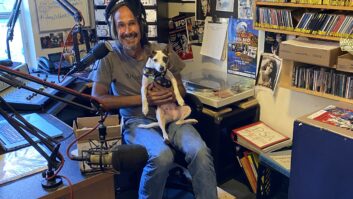
Fig. 1: Use these inexpensive floor mats at your transmitter site. Andy Soule is market engineering manager for Townsquare Media’s Brewer, Maine, cluster. Andy always looks for ways to make his sites nicer places to work. (He doesn’t have one with a hot tub yet, though with the return of water-cooled radio transmitters, he has new hope …)
Recently he was at the doctor’s office and was diagnosed with “housemaid’s knee.” He had spent a fair amount of time kneeling on cement floors while organizing and cleaning the site. Andy owns a set of kneepads, but of course he’d forgotten to bring them along. He also finds them uncomfortable over long periods of time.
Then at a discount store, Andy found a four-pack of 2-foot-by-2-foot foam floor mats, shown in Fig. 1 and made by Best Step. He could split the package between two sites, and at $12.95 they were a good value proposition. They are quite comfortable if you need to kneel, stand or even lay down to work on something close to the floor.
The blue floor mats, pictured in Fig. 2, match well with 1980s Harris blue and even complement the 1960s RCA blue nicely, as you can see. They have other colors, and even a faux wood grain that would look fabulous in front of a McMartin.

Fig. 2: Not only are they comfortable to work on, but the colors match many transmitters. Forget using bubble-wrap as makeshift floor cushions — these pads work great! While you’re at it, you might pick up a set for the studio, too.
An engineer recently showed me his under-the-console punchblock wiring. Convenient, as you wouldn’t disturb the air talent when making changes to a block, but a couple of these pads would definitely make work easier in a space like that. We find them at Home Depot and other vendors when we do an online search.
****
In 1928, Allied Radio Corp. was established as the radio parts distribution arm of Columbia Radio Corp. That same year, they printed their first catalog. The company was soon to become one of the most recognizable names in the electronics industry.
Wolfram Engineering Project Engineer Greg Muir remembers faithfully guarding those Allied catalogs, spending hours poring through them when he was a kid — and wishing that he had a larger allowance.
This website will bring back some great memories: www.alliedcatalogs.com. The site also has a link to the archive of Radio Shack catalogs; the company was founded in 1921 but didn’t print their first catalog until 1939.
****

Fig. 3: Here’s our next mystery studio picture. Guess the who, what, where, when! Speaking of memories, remember when both engineers and air talent wore dress shirts, ties and sport coats or suits to work? If so, Fig. 3 will bring back some flashbacks. You asked for another old-time radio picture. What can you deduce from this photo? Send your sleuthing to me at [email protected].
****
With lightning season upon us, how is your site grounding?
Harger Lightning Protection provides a variety of grounding, bonding, ground bars and lightning protection products. You’ll find a wealth of information at their website, www.harger.com. Thanks to Jim Garcaro for the Web address.
****
Is audio quality a thing of the past?” That question was asked by broadcast audio engineer Jay Yeary, owner of Transient Audio Laboratories.
Jim Anderson, a multiple-Grammy winner and jazz recording engineer, says he’ll play samples of work he recorded in the studio to compare original mixes against compressed versions of the same songs. To his utter horror, many students prefer the lower bit-rate compressed version.
At a recent New Mexico SBE meeting, audio consultant Paul Jacobs related similar stories. Jacobs’ consultancy specializes in the research of the digital and mobile listening experience. He has become a leading spokesperson for the radio industry, with regard to the changing in-car audio experience (www.jacobsmedia.com).
So: How do we handle the fact that many listeners seem to prefer bit-rate-limited Internet audio to full-fidelity broadcast?
Contribute to Workbench. You’ll help your fellow engineers, and qualify for SBE recertification credit. Send Workbench tips to [email protected]. Fax to (603) 472-4944.
Author John Bisset has spent 45 years in the broadcasting industry and is still learning. He handles West Coast sales for the Telos Alliance. He is SBE Certified and is a past recipient of the SBE’s Educator of the Year Award.












